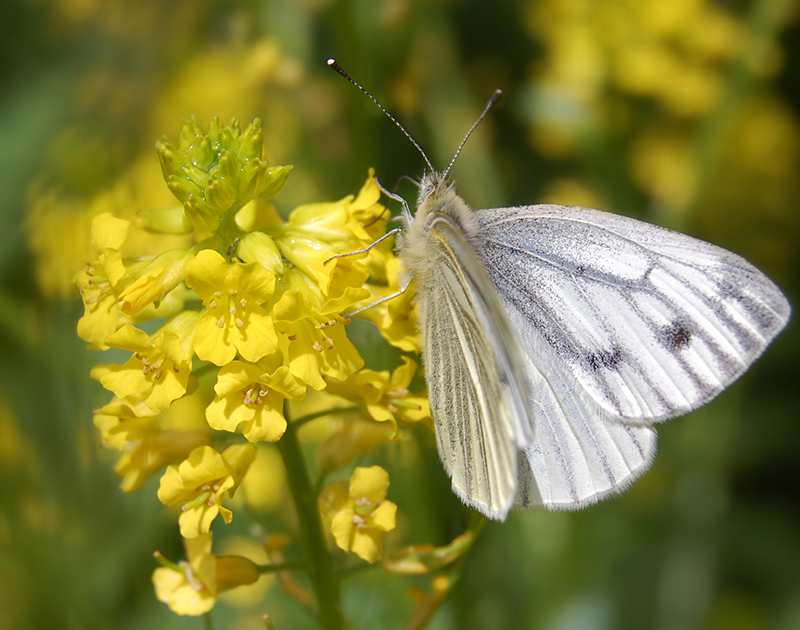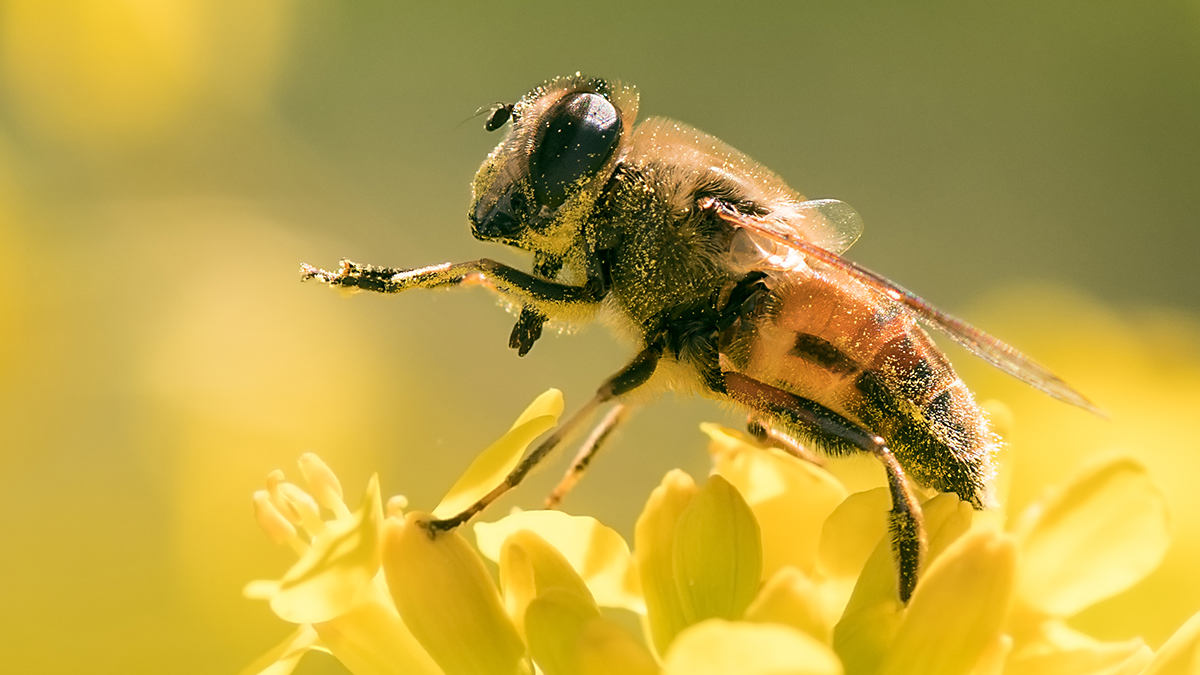A translation of this article was made possible by a partnership with Planeteando. Una traducción de este artículo fue posible gracias a una asociación con Planeteando.
Insect pollination of plants and crops supports a healthy and diverse ecosystem and also delivers hundreds of billions of dollars of economic value every year. However, insect pollination has been declining over the past century because of a combination of environmental factors, including increased levels of air pollution.
“Nitrogen oxides (NOx) emitted from diesel exhaust and tropospheric ozone are two of the most common air pollutants, and they interact with each other in the air,” explained James Ryalls, an ecologist at the University of Reading in the United Kingdom. Previous laboratory tests have shown that ozone and NOx can confuse pollinators’ ability to sniff out flowers, “but we didn’t know much about their real-world effects at field scales that are spatially and temporally relevant to the insects.”
Recently, Ryalls and his colleagues conducted open-air field tests to measure how common pollinators in the United Kingdom responded to increased concentrations of NOx and ozone. The team found that pollution levels well below government-regulated limits still significantly reduced the number of pollinators, the number of flower visits, and the overall pollination rate.
A Bug’s Life
The researchers conducted their open-air tests over the summers of 2018 and 2019. They filled eight patches of open field with pots of black mustard plants, which grow widely in Europe, North and South America, and parts of Asia and Africa. Using a custom-designed fumigation facility, they filled two zones each with ozone, NOx, and a combination of both pollutants. The final two zones were left with ambient air as experimental controls. They then monitored how many insect pollinators of 10 different species visited the mustard flowers per hour, the rate at which flowers were visited, and the overall pollination rate.

Over the course of two seasons, the team found that pollutants reduced the number of pollinators in a zone by 62%–70% and visits to flowers by 83%–90% depending on the insect species. Flies and hover flies were the most repelled by pollutants, followed by bees, butterflies, and moths. Even though beetles, true bugs, and parasitic wasps did not seem greatly affected by the pollution, the team found that pollination dropped by up to 31%. The team published these results in Environmental Pollution in January.
Some plant species rely on a single pollinator to reproduce, and some insects pollinate only a single type of plant. Still other pollinating insects rely solely on airborne odors to reproduce. “Insects smell the world the way we see it,” Shannon Olsson, a chemical ecologist at the Tata Institute of Fundamental Research in Bangalore, India, told the Wall Street Journal. “Their antennae are, for some species, more than 1 million times more sensitive than the human nose.”
These results highlighted a critical vulnerability of pollinators and the plants that rely on them. “Some niches may be filled by other species, but not enough to combat the adverse effects of a decrease in biodiversity,” Ryalls said.
Sensitive Noses
“Legislatively ‘safe’ levels of pollution can deter pollinators.”
Global levels of tropospheric ozone continue to rise, and diesel exhaust emissions continue to exceed regulatory limits, leading to a potent mix of pollutants close to the ground. These experiments were conducted with pollution levels that are below those commonly measured in and near urban areas and also below U.S. air quality standards. The results of the study “suggest that current levels of air pollution could be having a much greater impact on pollinators, biodiversity, and food production than we previously thought,” Ryalls said.
“The results are important because they show that legislatively ‘safe’ levels of pollution can deter pollinators,” said Olsson, who was not involved in the research.
“There are many global stressors affecting pollinator populations, including pesticides, land use change, and climate change,” Ryalls added. “Air pollution is another potential stressor to add to the growing pressures on pollinators.”
—Kimberly M. S. Cartier (@AstroKimCartier), Staff Writer

